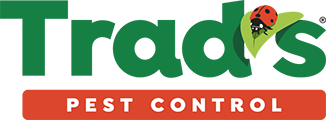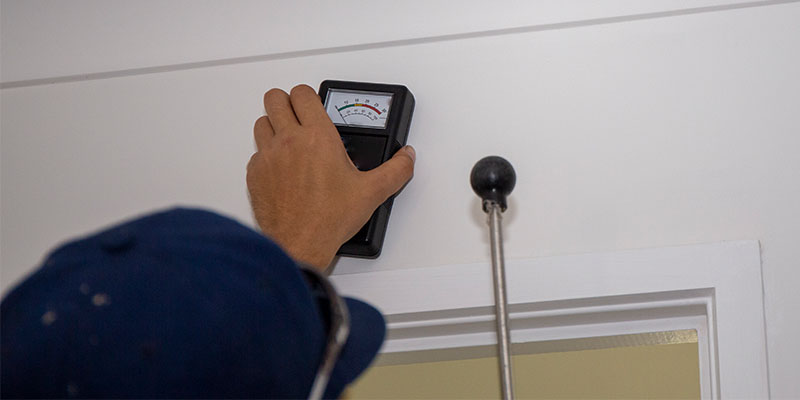Household pests you stumble upon are an unwelcome nuisance, but the ones you don’t see are often the most dangerous. While it’s easy to spot ants in the cupboard or flies buzzing around, hidden pests like termites and rodents can silently wreak havoc on your home. These unseen invaders can cause extensive damage, spread diseases, and compromise your family’s health without you even realizing it.
So, let’s take a few moments to dig deep and explore why the pests lurking in the shadows are the most threatening and what you can do to protect your home from their hidden dangers. Remember, just because you don’t see actual insects and rodents running wild in your house doesn’t mean they aren’t there.
The Hidden Threat: Why Household Pests You Don’t See Are the Most Dangerous
When you think of household pests, what comes to mind? Maybe you imagine roaches crawling under furniture or ants meandering around a bread box. But what about the pests you can’t see? These sneaky little critters can pack a punch in ways you might not expect. Here’s why they pose a greater risk than you might think…
The Invisible Invaders: A Closer Look at Hidden Pests
Not all pests are visible to the naked eye. Take spiders, for instance. These tiny arachnids are expert hiders. Spiders prefer dry and quiet places, like crevices, storage boxes, the inside of shoes or items, and even clinging to clothing hanging in the closet. All of these hiding places are great concealers. You may never even know they’re hanging out unless you’ve got an infestation; so you may not even know they’re there.
Health Risks: Tiny Bugs, Big Consequences
Pests that fly under the radar can cause significant health issues. Mites, for example, are so small you wouldn’t even notice them. Yet, they can trigger allergies, asthma, and skin irritation. Even if you’re not getting bitten, the side effects can linger, making you feel miserable. Just imagine going about your day, sneezing and coughing for no apparent reason!
The Sneaky Property Damage: Silent but Deadly
Some pests won’t just mess with your health; they’ll also wreak havoc on your home. Termites are a prime example. These little wood-eaters can munch through the very structure of your house, and you won’t even know until it’s too late. It’s like having a hidden thief who’s stealing your home piece by piece. Why fix a problem if you don’t even know it exists, right?
Breeding Grounds: The Dark Side of Hidden Pests
When you can’t see pests, you can’t control them. They can breed and multiply in places you don’t think to check. Crawl spaces, attics, and behind appliances are ideal hiding spots for rodents and insects alike. Just like a secret club, these pests can grow in numbers where you least expect them—which can lead to a full-on invasion.
The Cost of Invisibility: Time and Money Lost
Ignoring the hidden pests can lead to bigger expenses down the line. If you don’t tackle the issue early, you might end up spending a small fortune on extermination services or even repairs. Think of it as ignoring a small leak in your roof. It seems harmless at first, but it can turn into a waterfall and cost you hundreds to fix.
Detecting the Undetectable: Stay Aware
While these pests may be invisible, being proactive can help catch them before they become a bigger problem. Regularly check hidden spots and keep an eye out for small signs—like droppings or stains. You really need to be a detective in your own home. Every clue can lead you to the culprits!
Don’t Underestimate the Small Stuff
So, the next time you think about pests, remember that the ones you can’t see can often be more dangerous than the ones you can. From health threats to structural damage, these hidden nuisances can create chaos while you sleep soundly, unaware. Being alert and taking preventative measures is key. In the battle against household pests, vigilance is your best weapon against the dangers lurking in the shadows!
How Homeowners Can Find Hidden Pests Secretly Invading Their Properties
Finding hidden pests in your home can be challenging, but it’s crucial for preventing damage and maintaining a safe living environment. Here are some effective ways homeowners can detect these secret invaders:
Look for Signs of Activity
- Droppings and odor. Rodents leave droppings and a distinctive musky odor. Cockroaches also leave behind droppings that look like coffee grounds or pepper.
- Shed skins and wings. Insects like termites shed skins or wings as they grow. Check window sills, baseboards, and dark corners for these signs.
- Grease marks and smudges. Rodents often leave greasy streaks along walls and baseboards as they travel along their usual paths.
Inspect for Structural Damage
- Holes and gnaw marks. Rodents gnaw on wires, insulation, and wooden structures. Look for small holes in walls, floors, and near entry points.
- Sagging or hollow wood. Termites and carpenter ants can weaken wood from the inside, causing it to sound hollow when tapped or sag under weight.
- Bubbling or peeling paint. Moisture-loving pests, like termites, can cause paint to bubble or peel due to water accumulation behind walls.
Use Flashlights and Tools to Check Hidden Areas
- Check dark and damp areas. Use a flashlight to inspect under sinks, in crawl spaces, behind appliances, and in attics or crawl spaces where pests often hide.
- Inspect cracks and crevices. Small pests can hide in cracks, gaps in windows, and under baseboards. Use a mirror or smartphone camera to get a closer look.
Listen for Unusual Sounds
- Scratching and scurrying. Rodents and larger insects can make scratching noises inside walls, floors, or ceilings, especially at night.
- Buzzing or clicking. Insects like termites can produce faint clicking sounds when eating through wood, which you may hear in quiet areas.
Use Monitoring Tools
- Sticky traps. Place sticky traps in suspected areas to capture pests like roaches, ants, and spiders. They provide a clear indication of the type and number of pests present.
- Rodent bait stations. Set bait stations in attics, crawl spaces, and other concealed spots to detect rodent activity.
Professional Inspections
- Thermal imaging and moisture meters. Professionals use advanced tools like thermal cameras to detect heat signatures from hidden nests and moisture meters to find water damage indicative of pests.
- Pest inspections. A professional pest control service can thoroughly inspect your home, using specialized knowledge to find pests you might miss.
By regularly inspecting your home and paying attention to these subtle signs, you can catch hidden pests early and take action before they become a bigger problem.
Don’t let hidden pests put your health and home at risk! Contact Trad’s Pest Control for a free inspection. Our experts will identify and eliminate even the most elusive pests, ensuring your peace of mind!

